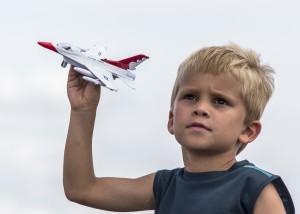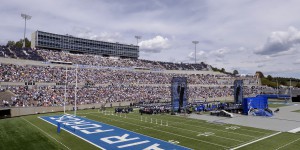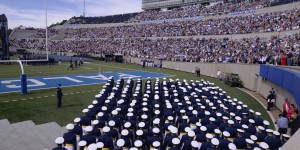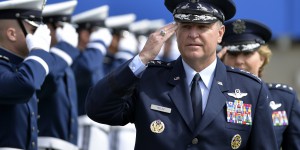Air Force News Service
Colorado Springs, Colo.
The Warrior Games, a spirited competition that pits wounded, ill or injured service members and veterans against their representative services, continues into its fourth year as teams converge on Colorado Springs, Colo., beginning May 11.
This year, 50 Airmen and former Airmen will compete in individual and team sports including archery, cycling, shooting, swimming, track and field, sitting volleyball and wheelchair basketball.
Over the next two weeks you’ll get a close-up look at these warriors and the long road they’ve travelled from, in some cases death’s door, to becoming some of the premier wounded athletes in the country.
There’s the story of Katie Robinson, a former combat camera videographer who was shot in Iraq and has worked through PTSD issues to compete in both swimming and track and field. Then there’s Darrell Fisher, a former senior airman who was pronounced dead in a random shooting and went through an intense near death experience before a long road to recovery.
Staff Sgt. Lara Ishikawa tells the story of her fight against invasive mammary carcinoma. “It’s heart-wrenching,” Ishikawa said. “Nobody expects to get cancer, and I had no family history of it. I’ve always been very healthy and active, and I tried to take care of myself. It was a shock…” She, along with two other cancer survivors, will compete this year.
Then there is the story of Master Sgt. Paul Horton, an Explosive Ordnance Disposal NCO, who says he was always the unlucky one growing up and has been blown up on six different occasions to prove it. He tells his story of overcoming the odds each time and somehow turning potential tragedy into a series of learning experiences. Maybe he’s not so unlucky after all.
These stories and more will be highlighted over the next two weeks as warriors from all services come together to show their mettle and compete over six days and seven events. These stories will sometimes amaze you, sometimes pull at your heart strings, but in all cases show examples of turning tragedy into something much more positive.
As a beginning to this series on the warrior games, below is a special post submitted by one of the Air Force wounded warriors.
By Keith Sekora
Air Force Wounded Warrior
Last month, 55 Airmen came together to represent the Air Force at a training camp for all 2013 Warrior Games competitors. Throughout the camp, we endured a rigorous training regiment to compete in different sports like track and field, shooting, swimming, cycling, archery, wheelchair basketball and seated volleyball.
For me, training days started out with more than two hours of track and field practice where I was put through the paces of throwing a discus and shot-put by coaches Buddy and Jenn Lizzol. After a quick lunch break, I attended another two-hour training session to gear up for seated volleyball where I was physically and mentally challenged every day by coaches Nicki Marino and Adrieen Rank. After a short drive to the archery range, I spent another two hours honing my archery skills under the watchful eye of Coach Gary. My favorite sport is definitely seated volleyball because I played it before I was wounded and love the fact that with some adaptation I can continue to play.

PHOTO: Retired Tech. Sgt. Keith Sekora practices a serve during sitting volleyball at the 2013 Warrior Games training camp at the Air Force Academy, Colo. Sekora is competing in volleyball, shot-put and discus.
After shrapnel from an improvised explosive device struck the back of my neck during a deployment to Afghanistan in 2010, I suffered a series of four strokes and was left with post-traumatic stress disorder, memory loss, vertigo and loss of feeling on the left side of my body. But, that hasn’t swayed my confidence in participating because I love competing in the Warrior Games. It gives me a sense of purpose again and also lets me know that I am not alone. Each of us compete under the flag of our branch of service, but I think it’s more important that we get to meet other wounded warriors who understand what we are going through. Everyone is willing to help each other out, no matter what branch you are from.
This is my second Warrior Games, and this year’s team is very young. There are not many returning athletes from last year’s games, and those who have returned are mentoring the new athletes.
Another big change is in the behind-the-scenes staff who worked hard to help things move along smoothly. This is by far the best training camp I have attended yet. Last year, leading up to the 2012 Warrior Games, I attended several adaptive sports camps with members of the Navy, Coast Guard and U.S. Special Operations Command teams and developed good friendships with many of them.
Don’t get me wrong, the competition is hard and no one lets up at all. We are here to show the world that even though we are wounded or disabled, we are still fierce competitors. I think 55 individual athletes came to training camp and left as a team with one thought in mind — to win!

















